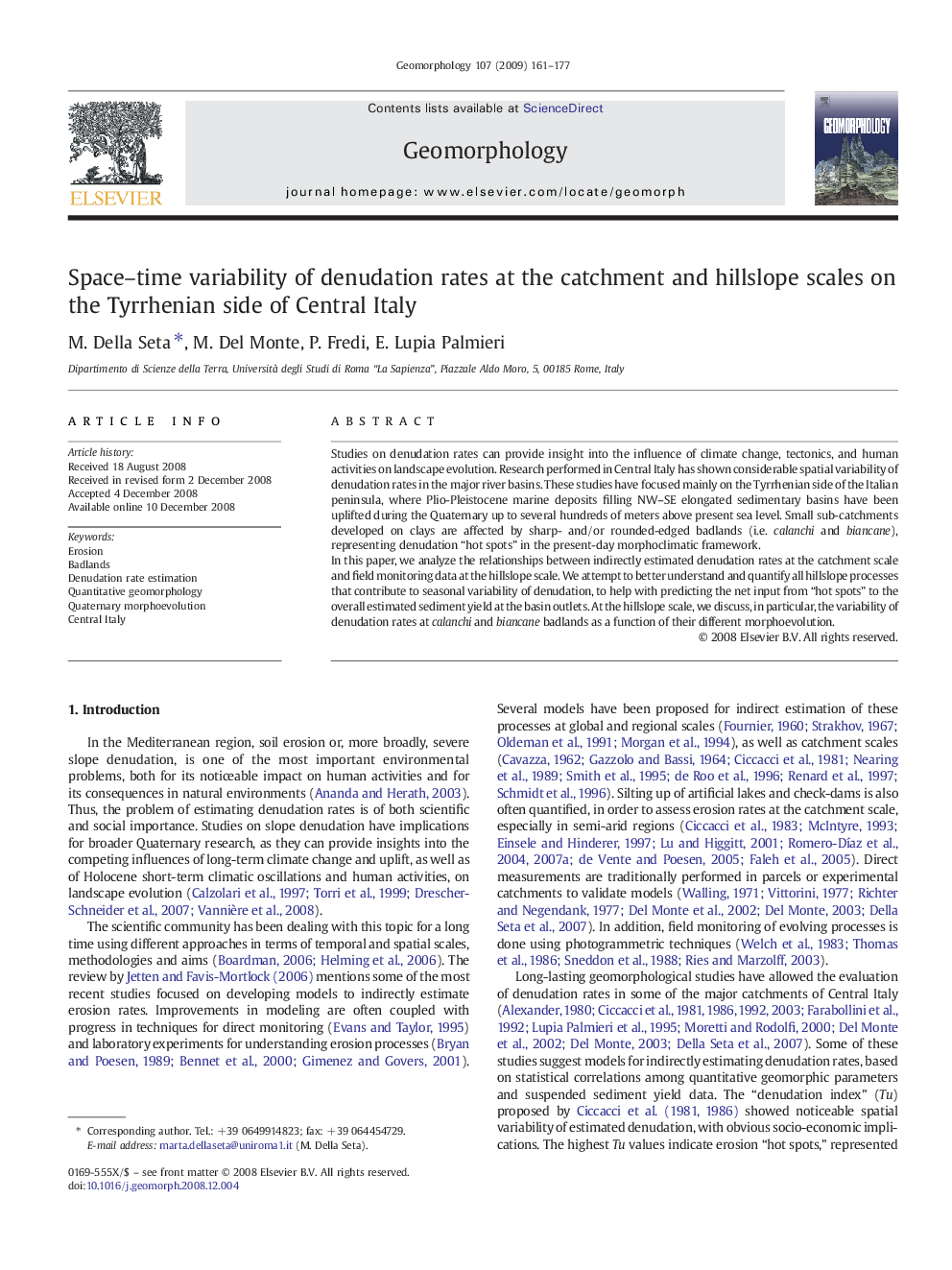| Article ID | Journal | Published Year | Pages | File Type |
|---|---|---|---|---|
| 4686397 | Geomorphology | 2009 | 17 Pages |
Studies on denudation rates can provide insight into the influence of climate change, tectonics, and human activities on landscape evolution. Research performed in Central Italy has shown considerable spatial variability of denudation rates in the major river basins. These studies have focused mainly on the Tyrrhenian side of the Italian peninsula, where Plio-Pleistocene marine deposits filling NW–SE elongated sedimentary basins have been uplifted during the Quaternary up to several hundreds of meters above present sea level. Small sub-catchments developed on clays are affected by sharp- and/or rounded-edged badlands (i.e. calanchi and biancane), representing denudation “hot spots” in the present-day morphoclimatic framework.In this paper, we analyze the relationships between indirectly estimated denudation rates at the catchment scale and field monitoring data at the hillslope scale. We attempt to better understand and quantify all hillslope processes that contribute to seasonal variability of denudation, to help with predicting the net input from “hot spots” to the overall estimated sediment yield at the basin outlets. At the hillslope scale, we discuss, in particular, the variability of denudation rates at calanchi and biancane badlands as a function of their different morphoevolution.
